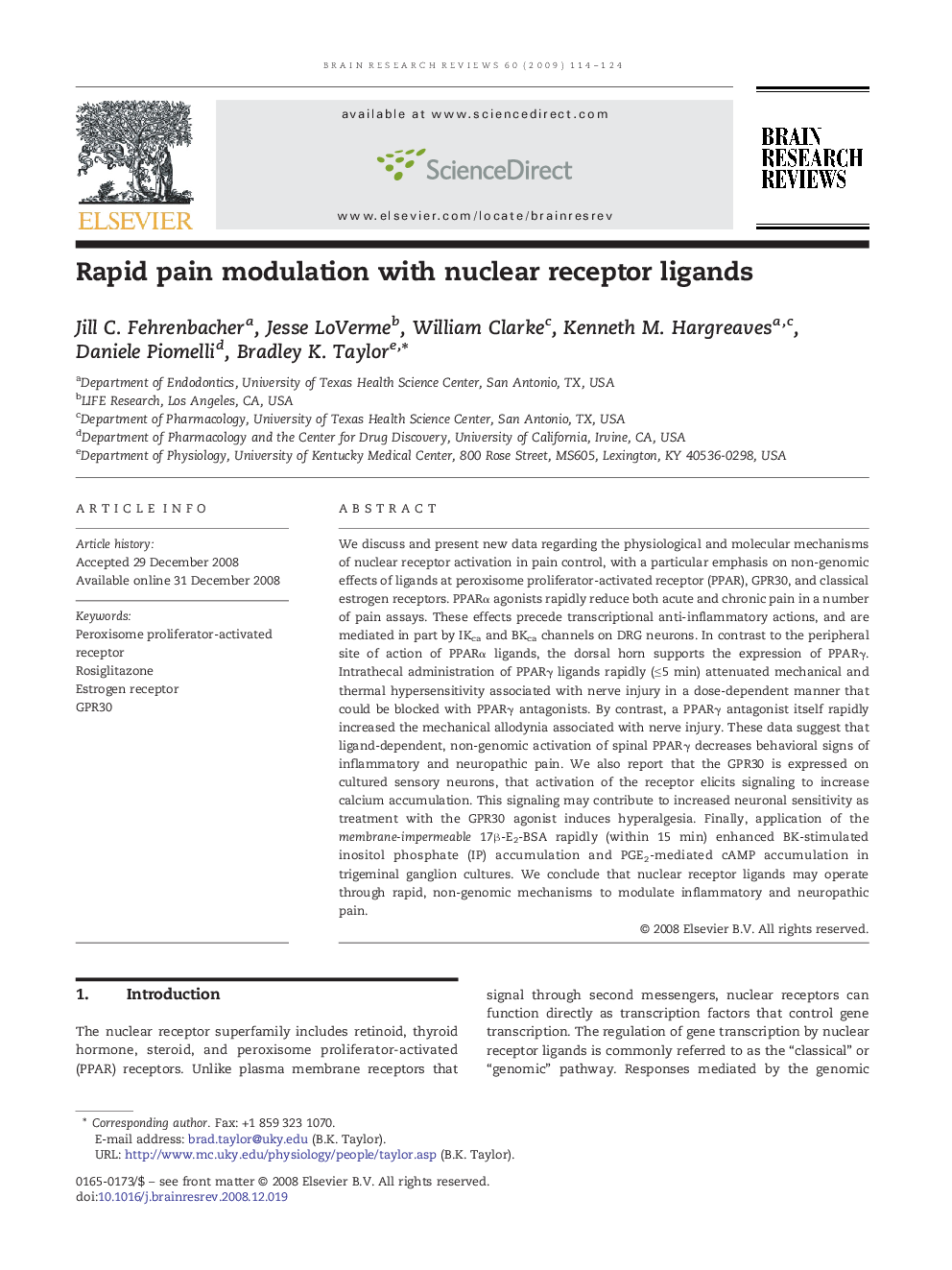| Article ID | Journal | Published Year | Pages | File Type |
|---|---|---|---|---|
| 4333810 | Brain Research Reviews | 2009 | 11 Pages |
We discuss and present new data regarding the physiological and molecular mechanisms of nuclear receptor activation in pain control, with a particular emphasis on non-genomic effects of ligands at peroxisome proliferator-activated receptor (PPAR), GPR30, and classical estrogen receptors. PPARα agonists rapidly reduce both acute and chronic pain in a number of pain assays. These effects precede transcriptional anti-inflammatory actions, and are mediated in part by IKca and BKca channels on DRG neurons. In contrast to the peripheral site of action of PPARα ligands, the dorsal horn supports the expression of PPARγ. Intrathecal administration of PPARγ ligands rapidly (≤ 5 min) attenuated mechanical and thermal hypersensitivity associated with nerve injury in a dose-dependent manner that could be blocked with PPARγ antagonists. By contrast, a PPARγ antagonist itself rapidly increased the mechanical allodynia associated with nerve injury. These data suggest that ligand-dependent, non-genomic activation of spinal PPARγ decreases behavioral signs of inflammatory and neuropathic pain. We also report that the GPR30 is expressed on cultured sensory neurons, that activation of the receptor elicits signaling to increase calcium accumulation. This signaling may contribute to increased neuronal sensitivity as treatment with the GPR30 agonist induces hyperalgesia. Finally, application of the membrane-impermeable 17β-E2-BSA rapidly (within 15 min) enhanced BK-stimulated inositol phosphate (IP) accumulation and PGE2-mediated cAMP accumulation in trigeminal ganglion cultures. We conclude that nuclear receptor ligands may operate through rapid, non-genomic mechanisms to modulate inflammatory and neuropathic pain.
